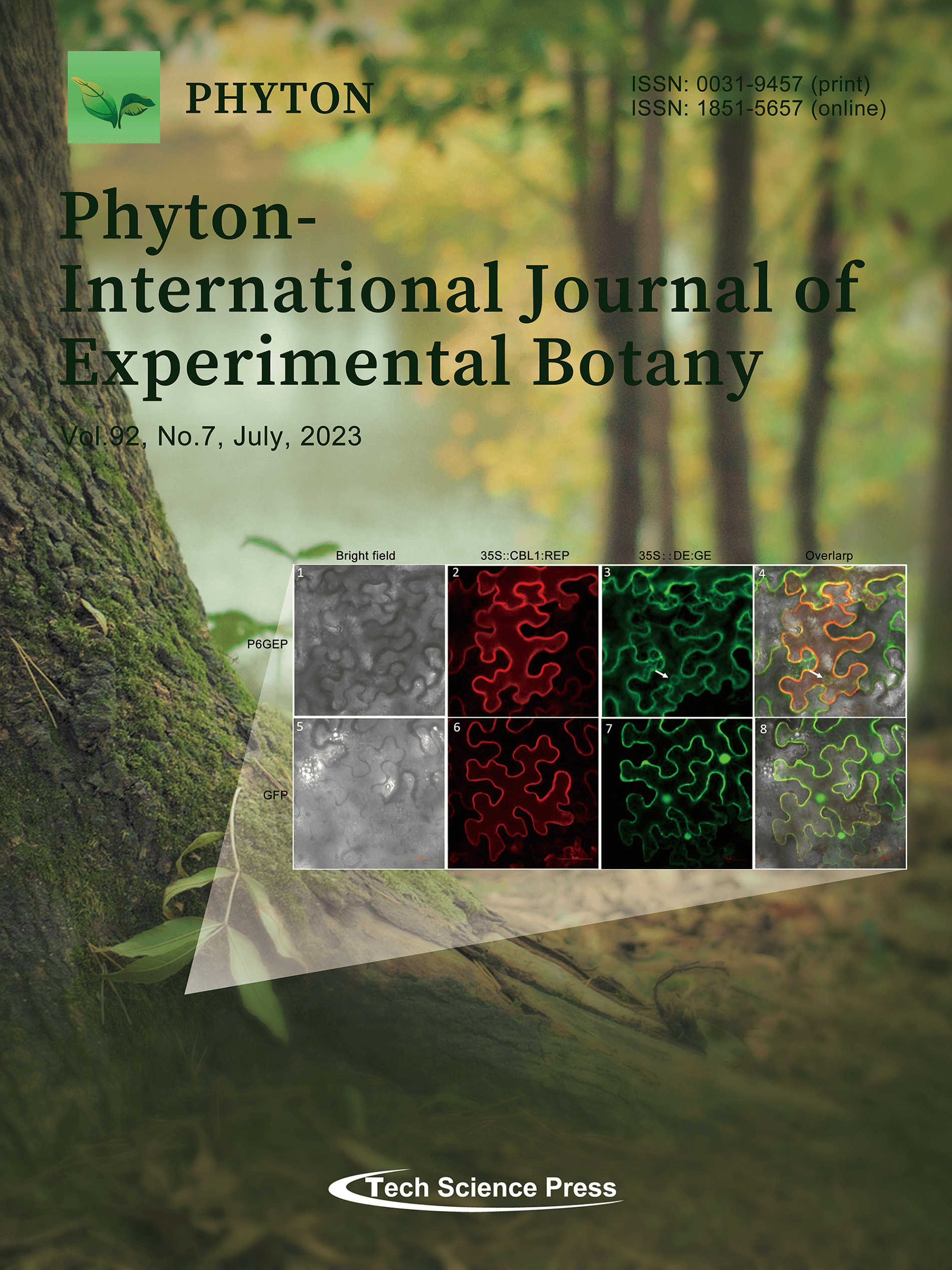DDG1 and G Protein α Subunit RGA1 Interaction Regulates Plant Height and Senescence in Rice (Oryza sativa)
Xi Liu1,2,#,*, Chuxuan Zhao2,#, Di Wang3,#, Gen Pan4, Xiaonan Ji2, Su Gao2, Tanxiao Du2, Yating Feng2, Wenjing Chen2
Phyton-International Journal of Experimental Botany, Vol.92, No.7, pp. 2051-2064, 2023, DOI:10.32604/phyton.2023.028196
- 29 May 2023
Abstract Many studies have already shown that dwarfism and moderate delayed leaf senescence positively impact rice yield, but the underlying molecular mechanism of dwarfism and leaf senescence remains largely unknown. Here, using map-based cloning, we identified an allele of DEP2, DDG1, which controls plant height and leaf senescence in rice. The ddg1 mutant displayed dwarfism, short panicles, and delayed leaf senescence. Compared with the wild-type, ddg1 was insensitive to exogenous gibberellins (GA) and brassinolide (BR). DDG1 is expressed in various organs, especially in stems and panicles. Yeast two-hybrid assay, bimolecular fluorescent complementation and luciferase complementation image assay showed that More >
